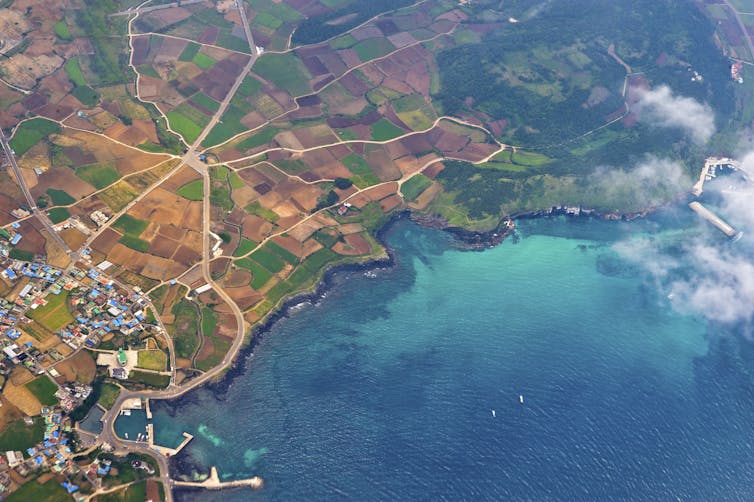It is easy to overlook the strong connection we have with the natural world in our modern lives. Although, nature has a remarkable ability to revive itself, we often ignore its direct signs. Successful forest restoration initiatives stand as powerful testaments to nature’s resilience when we choose to listen. Forests, the brightest green and most beautiful landscapes, are the lungs of our planet, vital for climate and water regulation, biodiversity, carbon sequestration and human well-being. Unfortunately, deforestation and degradation have created gaping wounds in this vital ecosystem. Within these scars, however, a powerful concept is emerging: forest restoration. Forest restoration is not just about planting trees, but a holistic approach to revitalizing the complex web of life within a forest. It’s about repairing broken connections, encouraging the return of native species, and revitalizing the natural processes that make forests thrive. In this exploration, we shine a spotlight on inspiring examples from the African continent, where remarkable changes have occurred in just five years, demonstrating the resurgence of biodiversity, ecosystem services, and soil fertility. Once we begin restoration initiatives, nature responds immediately, demonstrating its amazing resilience.


Restored forests are majestic landscapes, rich in biodiversity, sources of carbon sequestration, and provide climate and water regulation. Photo credit: Meta Francis
Lessons learned
In Tanzania, the Amani Nature Reserve had been severely degraded by deforestation and unsustainable land-use practices. However, when the Tanzania Forest Conservation Group initiated the restoration efforts, recovery was high and very successful. The restoration project led to the regrowth of indigenous tree species, the return of many bird and primate species, and enabled the ecosystem to perform its functions within five years.
The Ebo Forest in Cameroon is one of the world’s most important biodiversity hotspots and had suffered habitat degradation due to deforestation. Local communities and conservation organizations like Rainforest Trust have actively supported forest restoration initiatives of the forest, and they have succeeded in replanting native tree species in the degraded areas. Within a short period of time, endangered primates such as the drill and the Nigeria-Cameroon chimpanzee have returned back to the restored areas of the forest.
The government of Ethiopia and its development partners have worked tirelessly to restore degraded lands and improve ecosystem functions using forest-landscape-restoration approaches. For example, the restoration project implemented practices for afforestation, agroforestry, and soil and water conservation practices in the rocky and mountainous Tigray (northern Ethiopia). The impacts of the restoration efforts have been positive and significant, with increased vegetation cover, improved soil fertility, increased water availability, and the reintroduction of numerous wildlife species.
The Baviaanskloof Nature Reserve in South Africa was once degraded by severe erosion and topsoil loss, but after a comprehensive ecological restoration effort that included reforestation, holistic grazing management, and the reintroduction of keyspecies, soil fertility improved significantly. The restored soil supported the growth of diverse vegetation types in less than five years, creating an environment conducive to the return of wildlife and the establishment of a self-sustaining ecosystem.
Key messages
We can learn from these successful examples of forest restoration and soil fertility improvement. They remind us that nature is capable of self-healing when given the chance, and that we need to pay attention to its indicators, understand its needs and act accordingly.
A holistic approach that takes into account the interrelationships between the various components of an ecosystem is crucial, because the restoration and conservation of our natural habitats depends on sustainable agriculture, good land use practices and reforestation initiatives. Patience, a virtue often underestimated, is essential for successful restoration. Nature operates on its schedule, and the fruits of our efforts may not manifest immediately. The key takeaway is clear: give nature the chance, and it will recover. Let’s be good stewards of the environment. By initiating and participating in restoration projects, we can encourage nature to flourish and secure a sustainable future.
Together, through careful attention and concerted efforts, we can make the world a better place for both present and future generations.
References
Tanzania Forest Conservation Group. Amani Nature Reserve Restoration Project. Retrieved from http://www.tfcg.org/amani-nature-reserve-restoration-project: Last accessed on June 26, 2023.
Rainforest Trust. Saving Cameroon’s Great Apes. Retrieved from https://www.rainforesttrust.org/projects/saving-cameroons-great-apes/: Last accessed on June 26, 2023.
Nyssen, J., Poesen, J., Moeyersons, J., Deckers, J., Haile, M. and Lang, A. 2004. Human Impact on the Environment in the Ethiopian and Eritrean highlands-A State of the Art. Earth-Science Reviews, 64, 273-320.
Boshoff, A. 2005. The Baviaanskloof Mega-Reserve. An environmentally, socially and economically sustainable conservation and development initiative. Nelson Mandela Metropolitan University, Port Elizabeth, South Africa. Report No. 52. 47pp.
by Meta Francis Justine (South Sudan), Workinesh Takelle (Ethiopia) & Omobayo Ghislain (Benin) – Participants of the 46th UNEP/UNESCO/BMUV International Postgraduate Course on Environmental Management for Developing Countries.

































